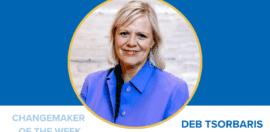Reflections on Collective Impact
10 September 2014 at 9:58 am
Those of us who have worked (and struggled) to achieve long term whole-of-community change owe it to ourselves and the communities we work in to take the potential of Collective Impact seriously, writes David Lilley, Collective Impact Consultant, with United Way Australia.
I’m someone who has worked to address place-based disadvantage for many years, and I’ve seen quite a few methods and approaches come and go. Just a few of these include: community development; integrated services; integrated governance; and place management.
There is something valuable in all of them. However none have really been effective in addressing entrenched place-based disadvantage, on a large scale, over a significant period of time.
Collective Impact has become the new buzz word. It is written about in journals, spoken about at conferences, and various organisations now claim to be ‘doing’ Collective Impact. This leads to some fairly obvious questions: is it really any different to what has come before, and will it work in practice? I think the answer to both of these questions is yes.
Earlier this week I had the privilege of hearing Bill Crim from United Way of Salt Lake, USA, discuss his Collective Impact journey. Like many of us Bill has seen millions of dollars poured into addressing social issues in disadvantaged communities, with some positive results for individual program participants, but no long term change in community wide indicators. In fact, at the community level things have often declined further. Bill calls this ‘the results paradox’.
In response to this dilemma, a couple of years ago Bill and his colleagues adopted the Collective Impact approach, the core elements of which include:
|
A Common Agenda |
|
|
Shared Measurement |
|
|
Mutually Reinforcing Activities |
|
|
Continuous Communication |
|
|
Backbone Support |
|
While it sounds like a cliché, listening to Bill was inspirational. He and his colleagues have taken a rigorous approach to Collective Impact, and they are seeing results.
The vision Bill and his colleagues work to is “A community in which all individuals and families achieve their human potential through education, income stability, and healthy lives”.
He explained that lots of people will say you can’t achieve this, and you will fail if you try. And indeed you will using traditional approaches in which:
- Funders select individual grantees
- Organisations work separately and compete
- Evaluation is concerned with isolating the impact of individual organisations, and
- Large scale change is assumed to depend on scaling organisations.
But this is where Collective Impact is different. United Way in Salt Lake has been achieving change by working as a backbone organisation and funder that takes the need for a common agenda, shared measurement, mutually reinforcing activities, and continuous communication seriously. For example they put effort and money into ‘backbone infrastructure’ that supports systemic change within elementary schools, rather than simply providing more core or supplementary services. This has led to greater collaboration, greater focus, and improved educational and life outcomes.
In Bill’s experience shared measurement is the biggest challenge. Interestingly, the challenge is not just about identifying and collecting shared indicators measures (the technical part of the exercise), but also relates to the sharing of data (which is primarily about transparency and trust).
This is because “we don’t have a culture of continuous improvement but of punishment”. That is, when data doesn’t look good organisations tend to be criticised or de-funded, rather than engaged in a search for understanding and continuous improvement.
This makes many of them shy away from the transparency that Collective Impact depends upon. Acknowledging this has led to United Way in Salt Lake taking a somewhat radical approach to their funding contracts, which remain in place until:
- The problem is solved, or
- They run out of money, or
- The data suggests that the programs and services are ill suited to the problem.
This is vastly different to the annual or tri-annual funding cycles that are so common in Australia and elsewhere. It presents a great challenge to put to funders, though I suspect it is a two way street. Funding recipients want flexibility in the work they do, and time to achieve results, while funding providers want to know that they are funding effective programs. Both groups need to develop their knowledge and skills in Collective Impact, and both need to understand the interests and needs of the other. When this occurs, new opportunities arise.
For me the key to unlocking the potential of Collective Impact lies in the facilitating (or backbone) role, as it is this role in particular that has been lacking in so many previous approaches.
Drawing again on Bill’s presentation, the core functions of this role include:
- Maintaining shared ownership and accountability
- Mastering the skills of adaptive leadership
- Remembering that it is always about people and relationships
- Conversations are the building block
- Facilitating effective individual and group conversations
- Using data for evidence based decision making and continuous improvement
Those of us who have worked (and struggled) to achieve long term whole of community change owe it to ourselves and the communities we work in to take the potential of Collective Impact seriously. This will involve no less than a willingness to be transparent, openness to working collaboratively, a commitment to resourcing backbone infrastructure, and leaving our egos at the door.







